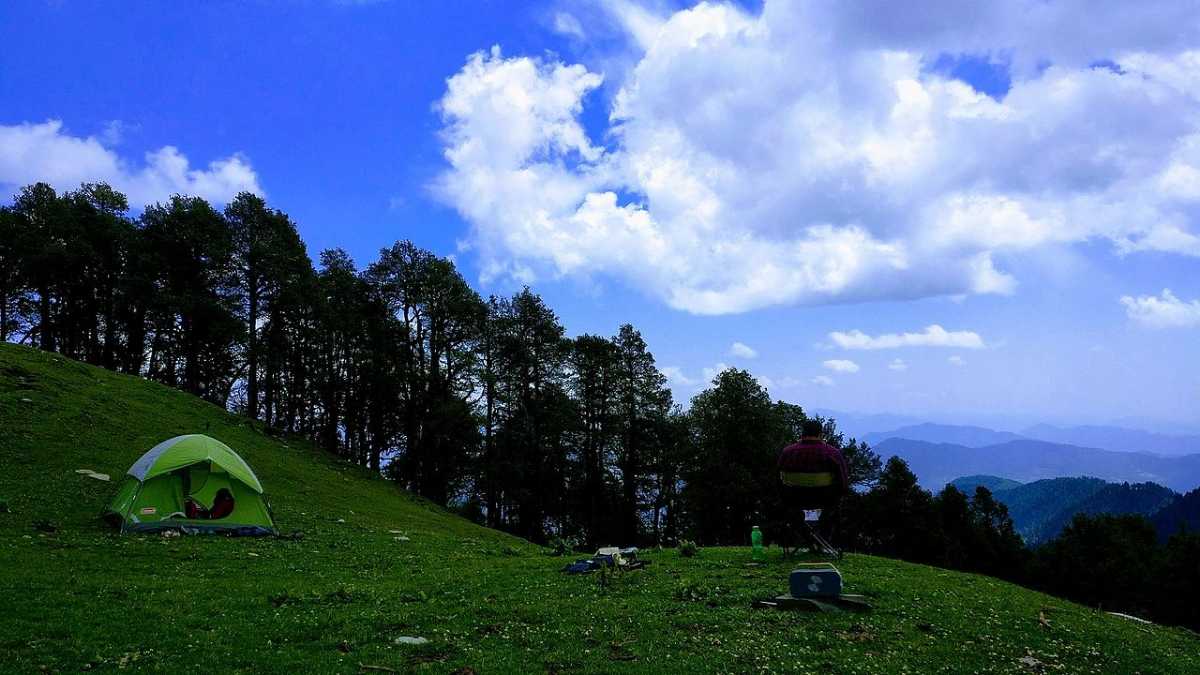
Jalori Pass
About Jalori Pass
Far From City: 40 kms from city center
Cost:
About Jalori Pass
Weather:
Time Required:3-4 hrs
Open Time:Open all day. Remains closed during the peak of winter typically December, January, and February.
Cost:No entry fee
Jalori Pass Trekking and Sightseeing
An expedition through Jalori Pass is fettered with naturalistic delights, places of worship, and other serene tourist spots. The Dhauladhar mountain range is visible on clear summer days. In addition to the picturesque landscape skirting the Pass, the trek takes you past the Mahakali temple, also known as Jalori Mata temple, located at a distance of approximately 3 km from the pass. It is a popular place of worship for the people in nearby villages. Trout fishing is a well-known sport in the nearby Tirthan Valley. And if history is a part of your forte, a trip to the forts of Fatehpurgarh, Raghunathpur and Kalagarh could be made possible.
The village of Shoja itself can be covered within 20-30 mins, with a short walk around the place exploring its people and culture. Several day treks, including the ones to Serolsar Lake, Budhi Nagin Temple, and Raghunathpur Fort originate in this tiny hamlet, making it the ultimate starting point for an off-the-beaten-track holiday that could give you both an adrenaline spike and a sense of peace at the same time. The land neighboring Shoja is part of the Great Himalayan National Park, which consists of large conifer and oak forests, rivers and glaciers - a taste of which is offered at Jalori.
Flora and Fauna at Jalori Pass
Situated high in the pristine state of Himachal Pradesh, the Jalori Pass houses a treasury of flowers, trees, and migratory birds explicitly found in this region. Positioned amidst a plethora of coniferous trees, the mountaintop is home to the Indian blue robin, nutcracker, white-throated tit, and yellow-billed blue magpie. Shrubs of Iris flowers, ferns and wild roses commonly festoon the grounds in the locale. The remaining fertile area is filled with fields of cauliflower, wheat, potatoes and other vegetables.
History of Jalori Pass
The road through Jalori pass holds a historical and strategic importance. It was constructed by the British to gain access to Kullu Valley. This calls for a mention of Penelope Chetwode, the daughter of a British Commander-in-Chief stationed in India during the late 1920's. Through her extensive voyages in the Kullu countryside, she immersed herself in the bounties of India and became a well-respected figure among local inhabitants for her knowledge and captivation with the terrain of Himachal Pradesh. Lady Penelope wrote a vivid account of her voyages in an epic travelogue called "Kulu: The End of the Habitable World", a title she explained in the following way-
"According to an ancient tradition, the original name of Kulu valley was Kulantpitha, meaning 'the end of the habitable world', and anyone who has stood at the top of the Rohtang Pass, the boundary between Kulu and Lahaul, will understand this name."
Up in the highlands, the Jalori Pass is deeply rooted in its own stories. The 'Budhi Naagin' temple is an important place to visit while at the Jalori Pass. Legend has it that the Goddess 'Budhi Naagin', the Mother of Snakes, resides in the Serolsar Lake. She is said to have two birds as companions in the vicinity, who jointly protect the lake, keeping it clean and pure. Moreover, it is also believed that the Pandavas visited this place during their exile. Numerous little hamlets can be found in the surrounding area, each with their own distinct cultures.
Best time to visit Jalori Pass
The Jalori pass is abuzz with tourists from April to November every year. In winters, i.e. from December to January, the area receives about 150 cm of snow, making it almost impossible to cross over from one side of the pass to the other. It mostly remains closed at this time of the year and reopens around mid-March.
How to Reach Jalori Pass
The Jalori pass is most easily accessible from the cities of Delhi, Ambala, Jalandhar, Ludhiana, Chandigarh, Amritsar and Leh (only during July to October). The nearest airport is in Bhuntar town of Kullu Manali, about 75 km from Shoja. If you choose to travel by rail, Shimla has the closest railway station, from where you must catch a taxi or bus to reach the pass. The best way to arrive at the pass is via vehicle. Jalori pass is about 5 km from the town of Shoja, but the road is rocky and underdeveloped, making it a 30-min ride with the car.
Top Tourist Places in Shojha
Jalori Pass
Serolsar Lake
Tirthan Valley
Raghupur Fort
All Tourist Places in Shojha
Tips
1. Refuel your vehicle before the Aut tunnel or keep a can of fuel in handy in case required2. Homestays is the most favourable mode of accommodation in Shoja and can be easily found in the proximity. 3. Wear comfortable sports shoes for trekking4. The trek route is quite isolated, so it may be advisable to travel in groups5. It would also be prudent to bring snacks and drinking water with you during the trek, as there are only a few eateries in the area that serve tea, coffee and noodles.6. Carry a trekking stick or umbrella for convenience.7. Avoid if you have altitude sickness.
Photos of Jalori Pass
Comments on Jalori Pass
Post Your Comment









